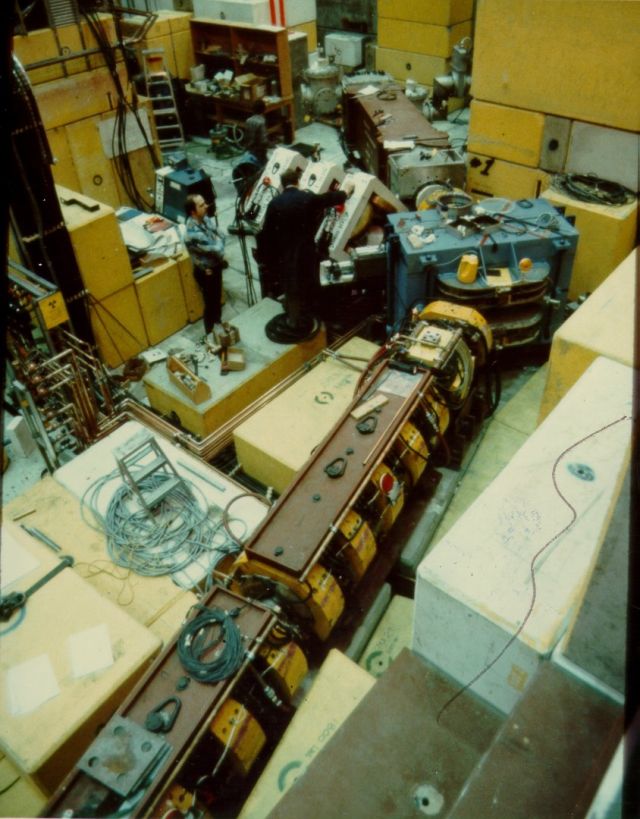
The M20 channel is both a (low momentum) surface muon and a (high momentum) decay muon beamline with a long history; and its present form reflects that history. The original (1975) M20 was rebuilt in 1982 as a split beamline (M20A&M20B) with the capacity to run `forward' (173 MeV/c) and `backward' (86.5 MeV/c) beams simultaneously into separate experiments, or to run `surface' muons (29 MeV/c) with spin-rotation into the B-leg alone. After M9B was built the M20A leg was dismantled to make M20(B) a dedicated surface-muon channel, albeit with a long `decay' section of 10 quadrupole magnets. It is, in principle, still usable for high-momentum backward-decay muons (80 MeV/c) and even higher-momentum forward muons, but it has never been used that way; M20 is, de facto, a dedicated surface-muon channel.
As with all surface muon beams, the flux of µ- is disappointing.

M20 takes muons from the 1AT2 target, typically 10 cm beryllium, and delivers a high flux of surface muons, but with a large final focus imaging the large production target. The beam flux is nearly doubled if a bare carbon target is used, but there have been problems with durability. In the table of muon beamlines, fluxes for a 10 cm Be production target are listed.
The spin rotator can provide clean beam with longitudinal or transverse (spin-rotated) polarization by operating at 30 or 175 kV/plate, respectively, although the settings may vary (spin is typically under-rotated using 150 kV to avoid sparking). Slits limit the final spot size and the momentum range transmitted. The spin rotator also selects momentum, and therefore reduces total flux by 50% at full 90° rotation.